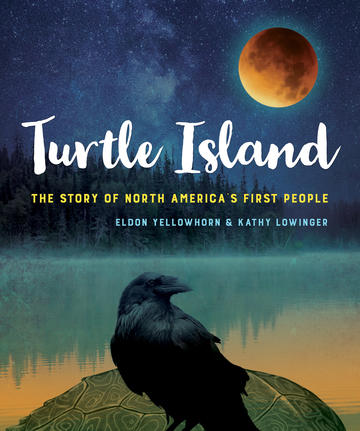Turtle Island
The Story of North America's First People
Description
Discover the amazing story of the Indigenous peoples of the Americas from the end of the Ice Age to the arrival of the Europeans.
• EUREKA! Nonfiction Children’s Book Awards Honoree • Waterloo Red Maple Nonfiction Award Winner • Rocky Mountain Book Award Nominee
“Deftly weaves together traditional narratives with archaeology.”—Jennifer Raff in Origin: A Genetic History of the Americas
Unlike most books that chronicle the history of Native peoples beginning with the arrival of Europeans in 1492, this book goes back to the Ice Age to give young readers a glimpse of what life was like pre-contact. The title, Turtle Island, refers to a Native story that explains how North and Central America were formed on the back of a turtle. Based on archeological finds and scientific research, we now have a clearer picture of how the Indigenous people lived. Using that knowledge, the authors take the reader back as far as 14,000 years ago to imagine moments in time.
A wide variety of topics are featured, from the animals that came and disappeared over time, to what people ate, how they expressed themselves through art, and how they adapted to their surroundings. The importance of story-telling among the Native peoples is always present to shed light on how they explained their world. The end of the book takes us to modern times when the story of the Native peoples is both tragic and hopeful.
Reviews
“Offers an appealing introduction to the diverse nations and remarkable resilience of the original inhabitants of this continent and is likely to inspire respect, pride, and a desire to learn more.”
- Kirkus Reviews, 07/15/17
“Highly recommended for middle to high school collections for its innovative, nonstereotypical, and engaging approach to the history of Indigenous peoples in North America.”
- School Library Journal, *starred review, 10/17
“A well researched book of high quality graphic design and literary style. The format and organization of material is well done within a uniquely imaginative approach to the topic . . . highly recommended for both public and school libraries . . . also would be a valuable resource for elementary school teachers.”
- Resource Links, 12/17
“Fills a gap in history.”
- Best Books for Kids and Teens, *starred review, Spring/18
“An interesting read . . . a good addition to a school library.”
- Green Teacher, 10/18
“An excellent textbook to use in elementary or middle school to supplement conventional offerings.”
- Youth Services Book Review, 12/31/18
